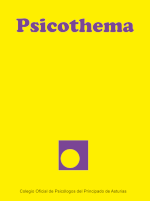Abstract
Background: Studies of the relationship between reading fluency and reading comprehension have traditionally focused on primary schools and narrative texts. However, reading fluency continues to develop during secondary school, when the texts used most are expository texts. Method: The aim of our study was to investigate reading fluency and reading comprehension in secondary-school students, comparing two texts (i.e. narrative and expository) containing various types of sentences (i.e. declarative, adversative and enumerative sentences). Results: We found differences in reading fluency between narrative and expository texts, the expository text being read with a more marked prosody (pauses and melodic contour) suggesting that readers rely on this for their understanding. In addition, we also found a relationship between reading fluency and reading comprehension, with a greater relationship of prosodic variables with the expository text than with the narrative one. Conclusions: Our results confirm that reading fluency continues to develop during secondary school. The expository text, due to its increased difficulty, seemingly needs to lean on and exaggerate the prosody more when reading in order to understand it.Downloads
Download data is not yet available.
